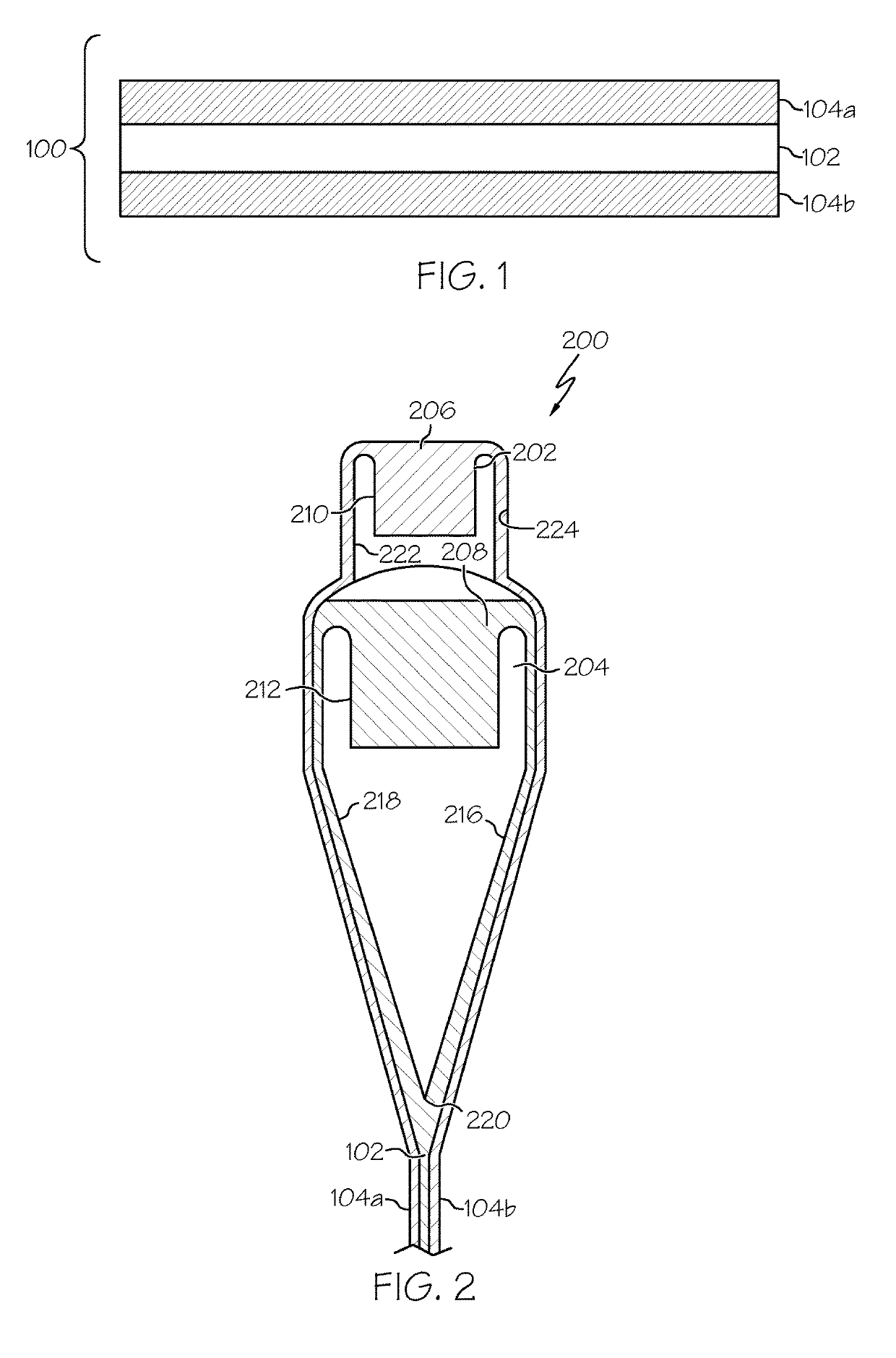Laminated glass article with ceramic phase and method of making the article
a technology of ceramic phase and laminated glass, applied in the field of laminated articles, can solve the problems of easy damage of glass articles incorporated in these devices, and achieve the effects of high dielectric constant, high strength and toughness, and high transparency
- Summary
- Abstract
- Description
- Claims
- Application Information
AI Technical Summary
Benefits of technology
Problems solved by technology
Method used
Image
Examples
Embodiment Construction
[0016]Reference will now be made in detail to embodiments of glass-ceramic compositions disclosed herein and articles incorporating the same, examples of which are illustrated in the accompanying drawings. Whenever possible, the same reference numerals will be used throughout the drawings to refer to the same or like parts.
[0017]The term “liquidus viscosity,” as used herein, refers to the shear viscosity of the glass composition at its liquidus temperature.
[0018]The term “liquidus temperatures,” as used herein, refers to the highest temperature at which devitrification occurs in the glass composition
[0019]The term “CTE,” as used herein, refers to the coefficient of thermal expansion of the glass composition averaged over a temperature range from about 20° C. to about 300° C.
[0020]The term “substantially free,” when used to described the absence of a particular oxide component in a glass composition, means that the component is present in the glass composition as a contaminant in a t...
PUM
| Property | Measurement | Unit |
|---|---|---|
| temperature | aaaaa | aaaaa |
| tensile stress | aaaaa | aaaaa |
| compressively stress | aaaaa | aaaaa |
Abstract
Description
Claims
Application Information
 Login to View More
Login to View More - R&D
- Intellectual Property
- Life Sciences
- Materials
- Tech Scout
- Unparalleled Data Quality
- Higher Quality Content
- 60% Fewer Hallucinations
Browse by: Latest US Patents, China's latest patents, Technical Efficacy Thesaurus, Application Domain, Technology Topic, Popular Technical Reports.
© 2025 PatSnap. All rights reserved.Legal|Privacy policy|Modern Slavery Act Transparency Statement|Sitemap|About US| Contact US: help@patsnap.com

